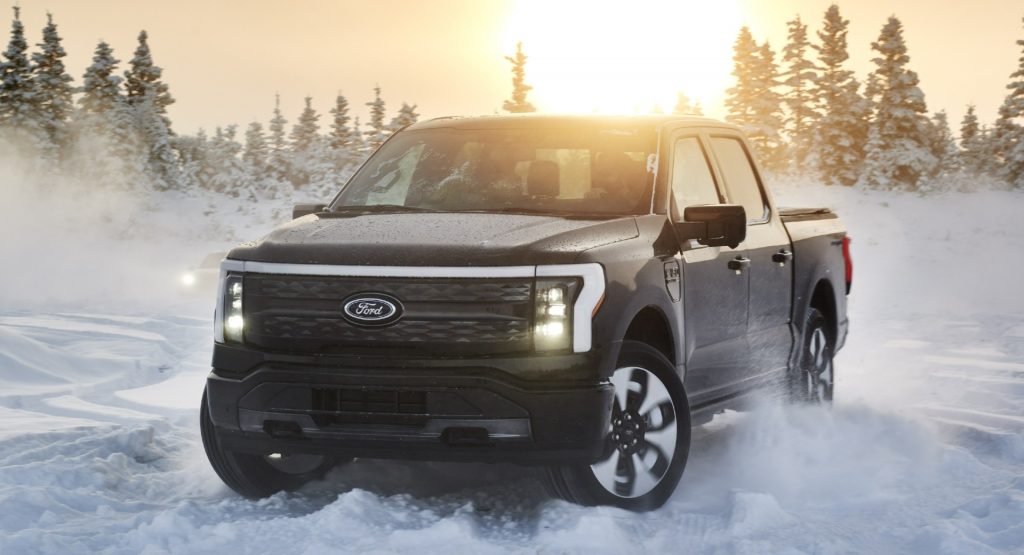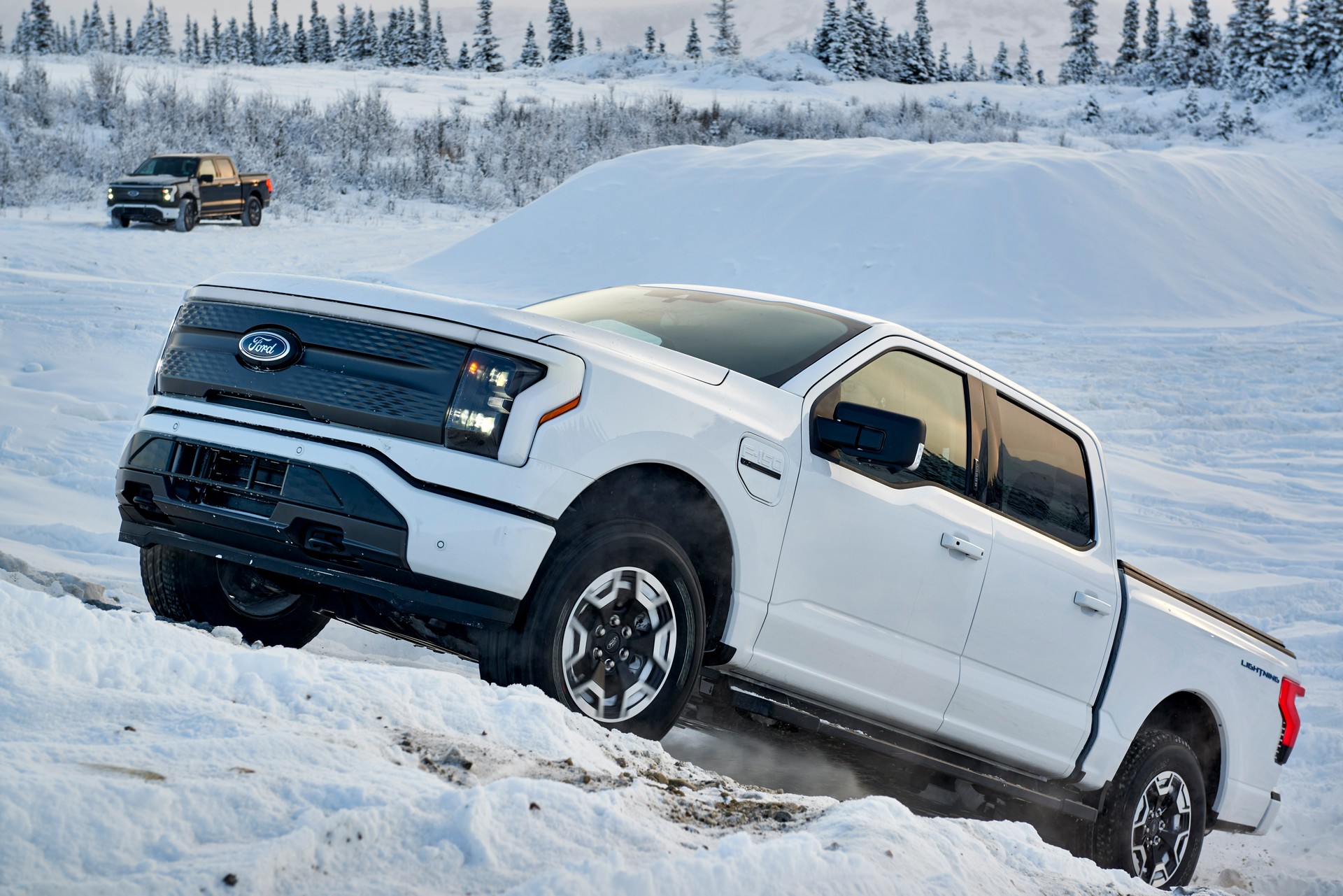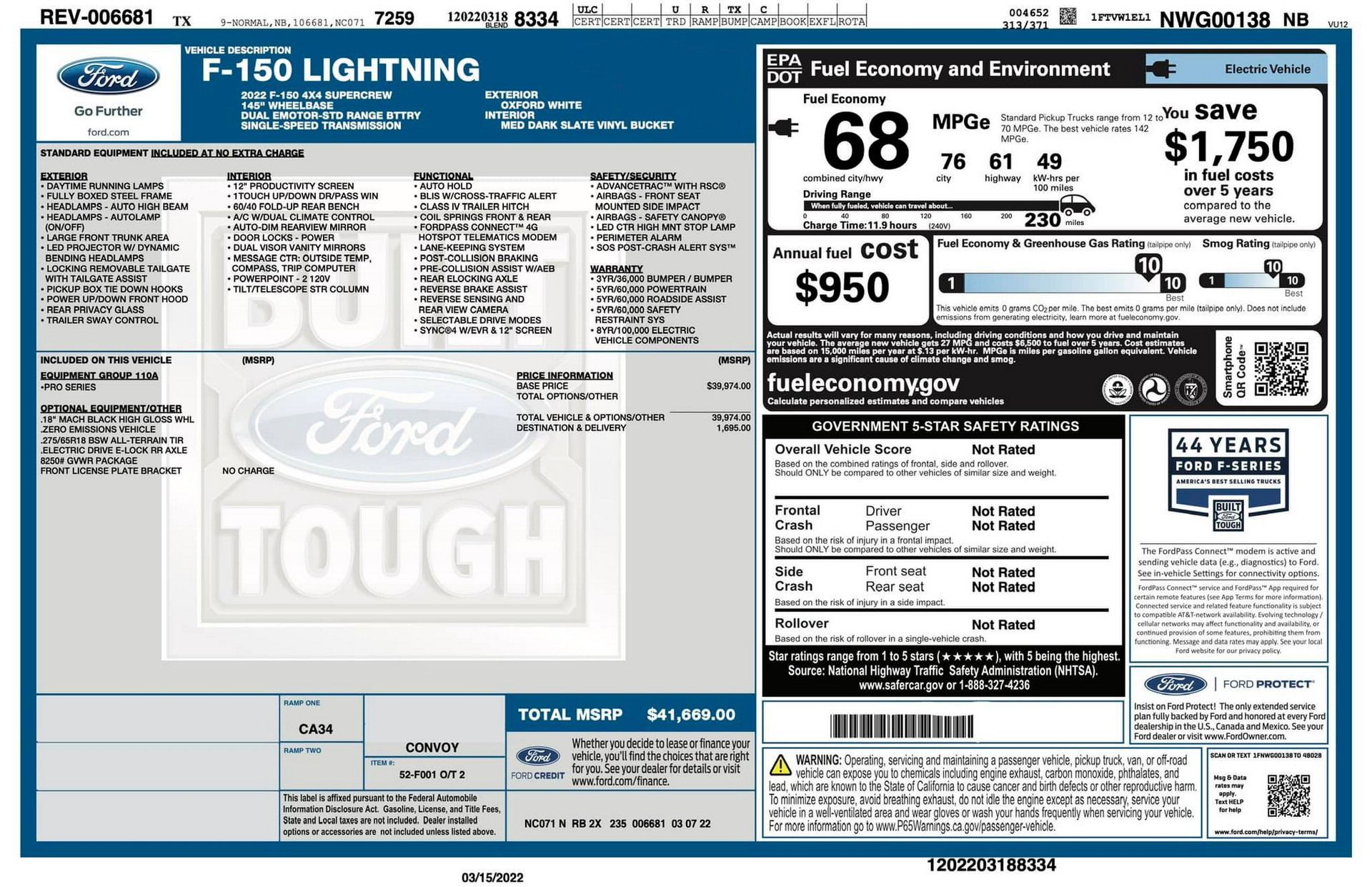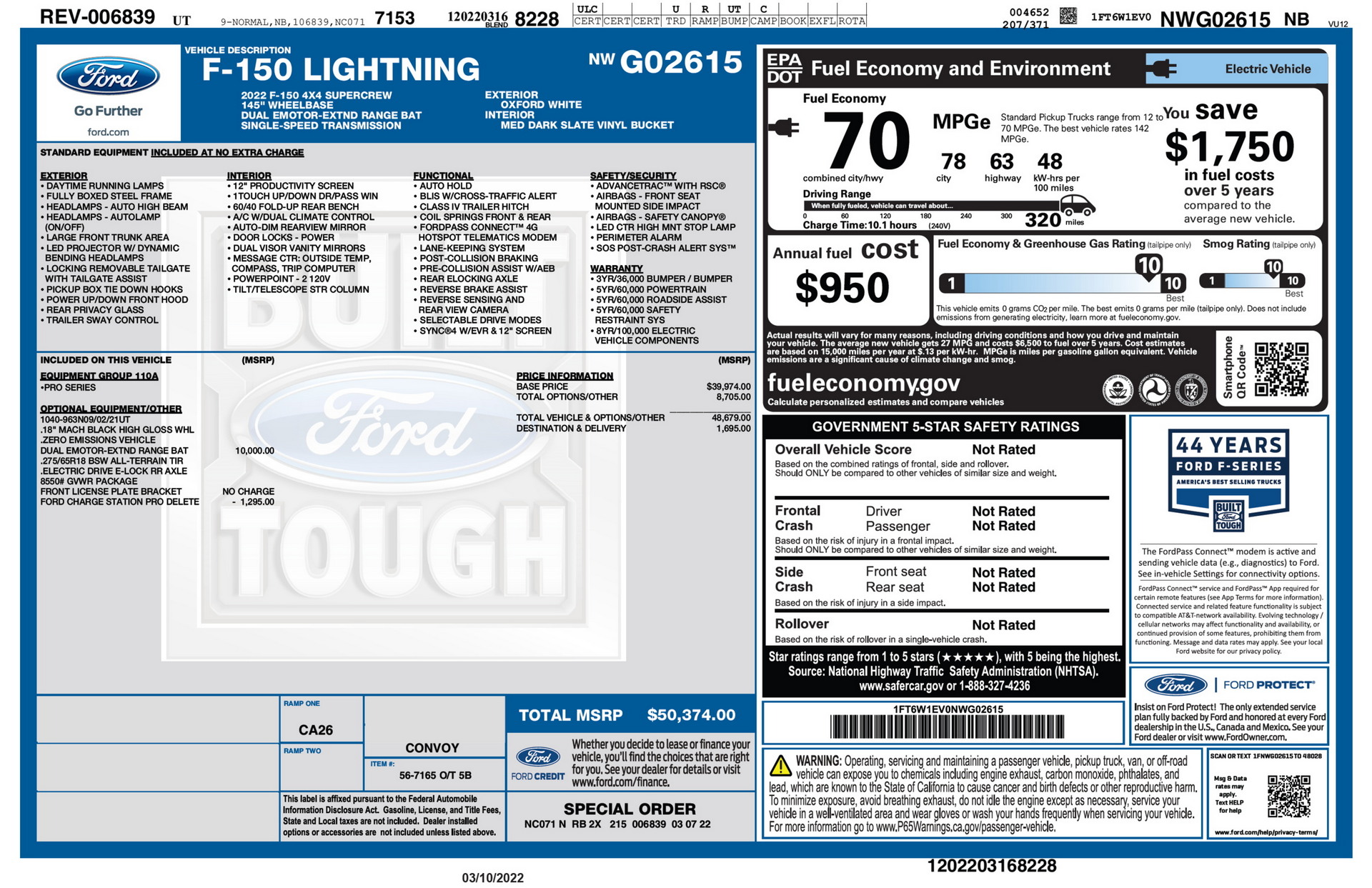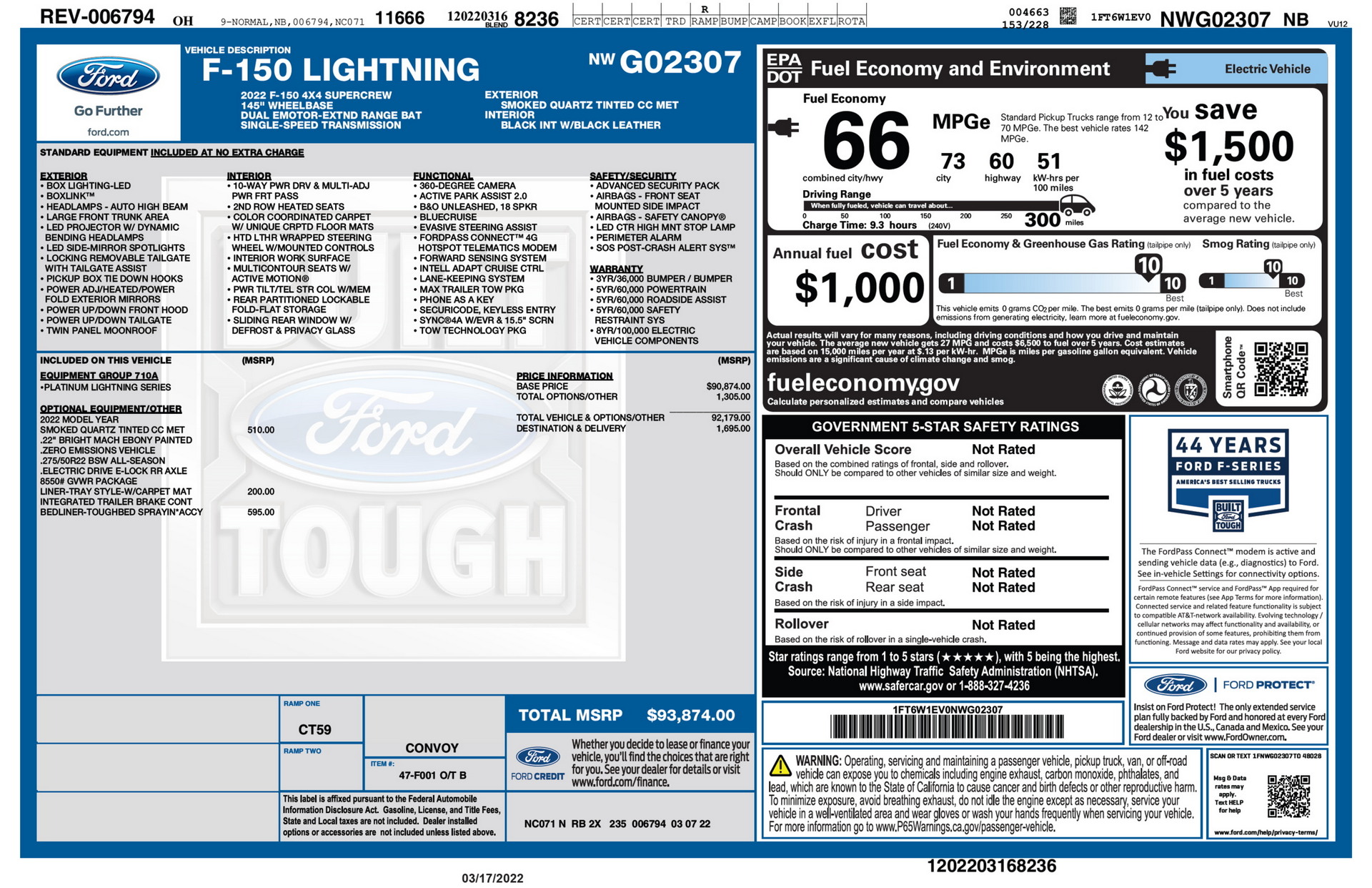The new Ford F-150 Lightning has just had its EPA ratings found on a series of window stickers. That’s significant because up until now, all we’ve had to go on is Ford’s EPA estimated target numbers. With the final range estimates finally made public we can take a deeper dive into how it compares to other EVs including the Rivian R1T.
The EPA estimated range numbers were a surprise found by the folks over at F150gen14.com as one user perused Autotrader for the electrified pickup. While we don’t have range numbers for each and every configuration of the F-150 Lightning, three of the most important trim levels are included in the findings.
Related: Ford Opens 2022 F-150 Lightning Configurator, We Topped Out At $96,000
Among them is the base Lightning pickup which has a total EPA estimated range of 230-miles (370 km). The sticker also shows that it’ll require 49 kWH to go 100 miles which is only one more than the Rivian R1T. It also gets an EPA estimated 76 MPGe in the city which is a couple better than the Rivian. Where the R1T does better is on the highway.
Thanks to its smaller surface area, it achieves 66 MPGe while the standard F-150 only gets 61. That theme continues throughout the Ford Lightning lineup too. The best performer is the base truck with an extended battery which gets 63 MPGe. Despite not being as efficient as the Rivian in many ways, the Lightning still achieves impressive scores overall.
The base extended-range truck can go an estimated 320 miles (514 km) between charges and the Platinum with all of its extra gear can still go 300 miles (482 km). Both of those trucks use the 131 kWh battery pack that’s optional on the XLT and the Lariat trims.
While that range is pretty solid for a large electric truck, it’s nowhere near as far as the most efficient ICE F-150 can go. The 2.7-liter V6-powered version can go an EPA-estimated 506-572 miles on a single tank of fuel.
We’ll have to wait to find out how well the public will adopt the new electrified pickup truck but if reservations are anything to go on, we should see quite a number of them on roads this year.








